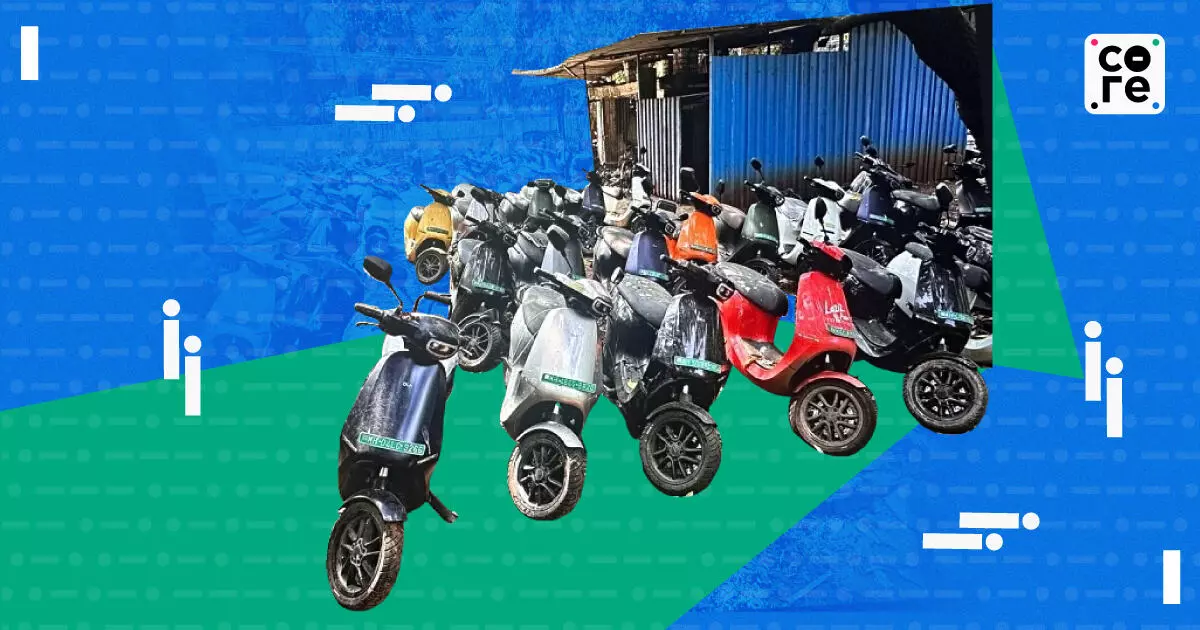
The Fork On The Road For Ola
Ola Electric is catching heat, as CEO Bhavish Aggarwal was sparring with comedian Kunal Kamra on social media, sparking a buzz about the company's after-sales service woes.

The problems that cab hailing company turned electric vehicle maker Ola Electrics faces began with a fork. This wasn’t the kind of fork you eat with but the piece of metal that joins the handlebar of a two-wheeler to the front wheel.
Ola Electric, India’s largest electric scooter manufacturer, acquired its technology from a Dutch e-scooter company Etergo. The technology and components were rolled out in the Indian market in August 2021. A major exception seemed to be the battery pack which was now fixed as opposed to the removable in the original. Automotive reviewers called the Ola S1Pro a better scooter than the original and India’s best-performing, fastest and even best-looking electric scooter. This was till the forks started to collapse and complaints gathered steam in January 2023. Users shared pictures and even initiated a Change.org petition against the company.
Some users pointed out, and automotive journalists concurred, that it was quite obvious that this design was never meant for Indian roads. The right thing for Ola to have done is a proper recall and fix the forks. Instead, in March it offered an optional upgrade to strengthen the fork further while insisting the concerns were unfounded and its components were engineered under extreme conditions and built for greater loads. Ola’s response was denial, obfuscation, and attack as is evident from their note released in March. A trait that continues to the present day. Ola CEO Bhavish Aggarwal found himself in the thick of a social media battle with stand-up comedian Kunal Kamra who posted pictures of scooters awaiting repair.
Is Ola Learning Its Lessons?
There are several lessons for Ola to learn from this incident. First, there is a reason why products that can cause harm to their users when they malfunction — like cars and scooters — have to undergo severe testing. Back in the day, Tata Motors faced criticism over the Tata Indica and the Tata Nano. Ratan Tata, then chairperson of the Tata Group, did not launch personal attacks on competitors or social media trolls for his misery.
The problem, be it a battery or a fork, gets compounded when the service centres of the manufacturer aren’t equipped enough to solve it. This reflects inexperience and arrogance on the part of the maker of the product. Traditional automakers understand the cycle better — that setting up a dealership network to sell vehicles should go hand in hand with servicing capability as new vehicles are launched. Ola instead went for a direct-to-consumer approach which has evidently backfired. Two weeks ago it announced a shift in strategy with a turn towards multi-brand retail showrooms.
The bottom line is that the automotive industry is a tough one for serious players and even the best make mistakes. There is a shortage of electric vehicle (EV) technicians today, for all classes of EVs. In such a scenario, companies should not be dumping products in the market without a proportionate capacity of trained service staff to respond when things go wrong. Unless, they didn’t really budget for it in the first place.
The Problem Of Price
The starting price point for the S1 Ola scooter was Rs 80,000, which they are now selling for Rs 49,000. The older prices are still showing on several auto websites. This is irrational and detrimental to the company and the industry. Low prices mean compromises along the way, including the cost of setting up a spares and service network. The company could of course argue that investors are paying for these market entry or penetration strategies. And discounting is a cost they can bear. That is technically correct but practically improbable as eventually, the mistakes of the past will catch up with them. Because unlike in other digital industries, your job does not end with customer acquisition. It begins there..
Ola Electric is catching heat, as CEO Bhavish Aggarwal was sparring with comedian Kunal Kamra on social media, sparking a buzz about the company's after-sales service woes.
Zinal Dedhia is a special correspondent covering India’s aviation, logistics, shipping, and e-commerce sectors. She holds a master’s degree from Nottingham Trent University, UK. Outside the newsroom, she loves exploring new places and experimenting in the kitchen.

